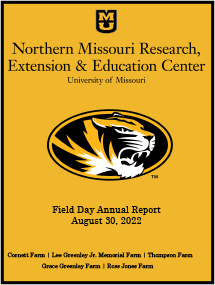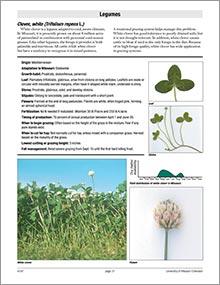

Dairy Grazing: Selecting the Right Forage, Page 28
Reviewed
Kura clover is a persistent legume with high forage yield and quality, ideal for grazing systems but slow to establish.
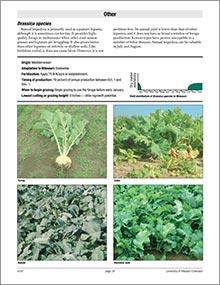
Dairy Grazing: Selecting the Right Forage, Page 31
Reviewed
Annual lespedeza offers midsummer forage, thriving on poor soils without causing bloat, but yields less and is prone to disease.
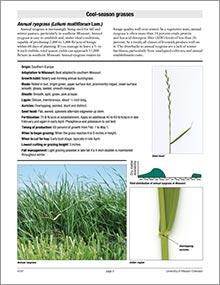
Dairy Grazing: Selecting the Right Forage, Page 02
Reviewed
Annual ryegrass offers fast growth, winter hardiness, and high nutritional value, making it an excellent choice for dairy grazing and temporary pasture.
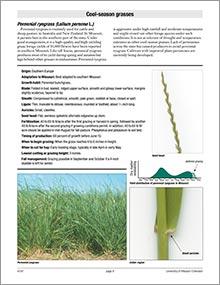
Dairy Grazing: Selecting the Right Forage, Page 05
Reviewed
Learn about perennial ryegrass and its adaptation to Missouri's climate, including best growth practices, grazing management, and fertilization tips.

Dairy Grazing: Selecting the Right Forage, Page 08
Reviewed
Discover tips for selecting the right forages like small grains for winter grazing, including planting and management strategies tailored to Missouri's climate.
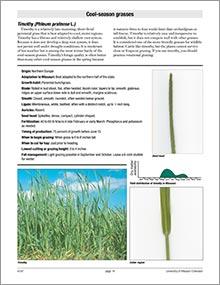
Dairy Grazing: Selecting the Right Forage, Page 11
Reviewed
Discover the characteristics, growth habits, and management tips for timothy grass (Phleum pratense L.) in dairy grazing systems.

Budding
Reviewed
Budding is a grafting technique where a single bud is inserted into a plant stock, often used to propagate fruit trees and ornamental plants. The best time is in fall.
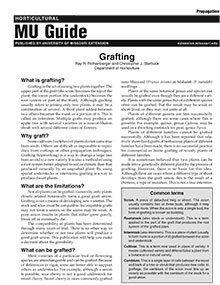
Grafting
Reviewed
Grafting is the act of joining two plants together and is a way to change a large tree from an old to a new variety. Visit our site to learn more.
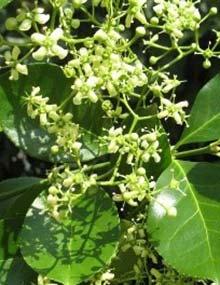
Gardening in the Shade, Page 04
Revised
Explore shade-tolerant evergreens like American holly, Canada hemlock, and Japanese holly, ideal for adding year-round interest to your shaded garden.
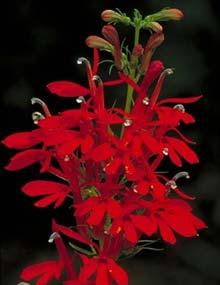
Gardening in the Shade, Page 07
Revised
Discover shade-tolerant perennials like astilbe, hosta, and bleedingheart to enhance your garden's beauty. Learn how spring-flowering bulbs thrive under trees.
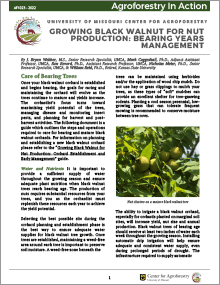
Growing Black Walnut for Nut Production: Bearing Years Management
Revised
Once your black walnut orchard is established and begins bearing, the goals for caring and maintaining the orchard will evolve as the trees continue to mature and yields increase. This guide outlines the steps and operations required to care for bearing and mature black walnut orchards.
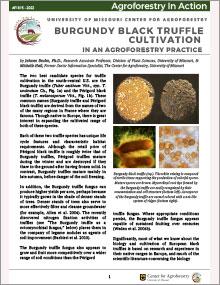
Burgundy Black Truffle Cultivation in an Agroforestry Practice
Revised
Editor's note
The following abstract describes a publication that is intended for distribution as a downloadable PDF.
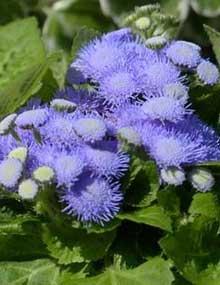
Gardening in the Shade, Page 02
Revised
Learn about these shade-tolerant annual flowers: Ageratum, Flossflower; Begonia, tuberous; Begonia, wax leaf; Browallia; Coleus; Flowering tobacco; Foxglove; Impatiens; Lobelia; Pansy; and Wishbone flower.
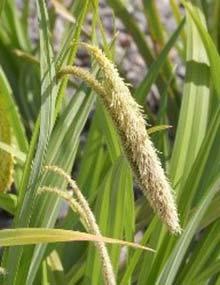
Gardening in the Shade, Page 05
Revised
Learn about these shade-tolerant grasses: Bottlebrush grass; Hakonegrass; Maiden grass, Silver grass; Sedge; Soft rush; Tufted hairgrass; and Woodrush.
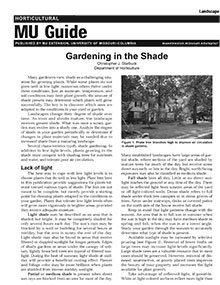
Gardening in the Shade
Revised
Many gardeners view shade as a challenging situation for growing plants. While some plants do not grow well in low light, numerous others thrive under these conditions. The key is to discover which ones are adapted to the conditions in your yard or garden.
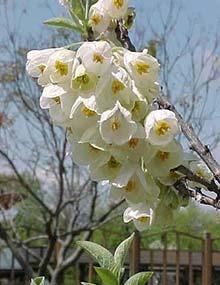
Gardening in the Shade, Page 08
Revised
Discover small trees ideal for shaded urban yards, including dogwoods, serviceberry, and hornbeam, with details on size, soil needs, and fall color.
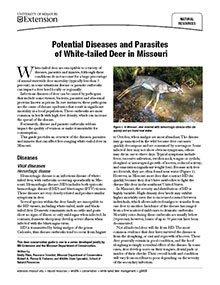
Potential Diseases and Parasites of White-tailed Deer in Missouri
Reviewed
White-tailed deer are susceptible to a variety of issues. Visit our site to learn about Potential Diseases and Parasites of White-tailed Deer in Missouri.
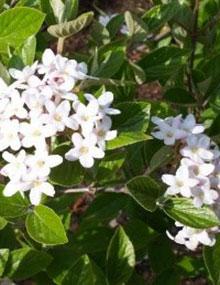
Gardening in the Shade, Page 03
Revised
Discover shade-tolerant deciduous shrubs like arrowwood viburnum, bottlebrush buckeye, and oakleaf hydrangea to enhance your shaded garden spaces.
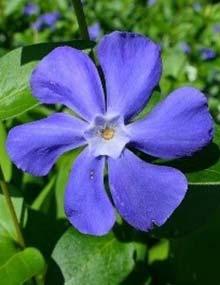
Gardening in the Shade, Page 06
Revised
Discover plants that thrive in low-light conditions and learn how to enhance your shaded garden with suitable selections and care tips.
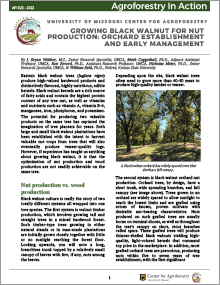
Growing Black Walnut for Nut Production: Orchard Establishment and Early Management
Revised
Eastern black walnut trees (Juglans nigra) produce high-valued hardwood products and distinctively flavored, highly nutritious, edible kernels.
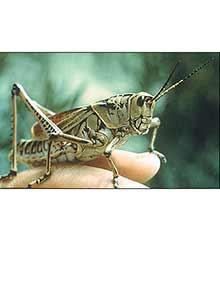
Grasshopper Control in Missouri Forage Crops and Pastures
Revised
Protect forage crops and pastures from grasshopper damage with early detection and control strategies tailored for Missouri's conditions.
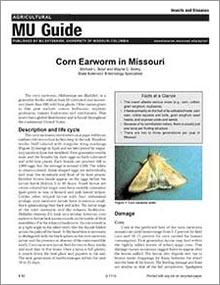
Corn Earworm in Missouri
Revised
Learn about corn earworm's impact on Missouri crops, its life cycle, and management strategies to protect yields from this pervasive pest.
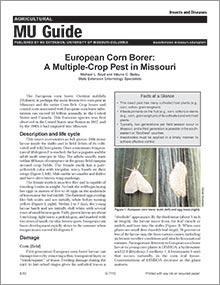
European Corn Borer: A Multiple-Crop Pest in Missouri
Revised
Learn how the European corn borer affects crops like corn, cotton, and grain sorghum in Missouri. Explore its lifecycle, damage, and management strategies.
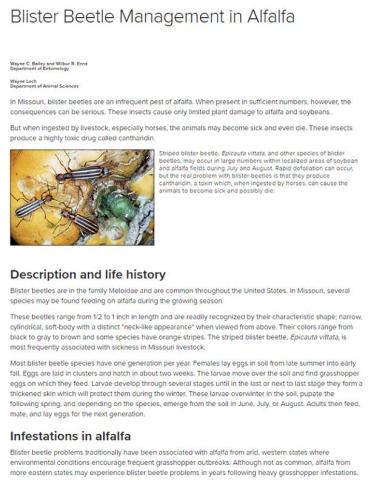
Blister Beetle Management in Alfalfa
Revised
Blister beetles in alfalfa pose a serious risk to livestock due to cantharidin toxicity, especially during summer harvests. Learn how to manage infestations.
